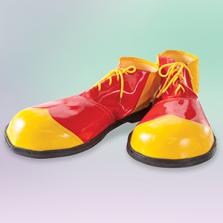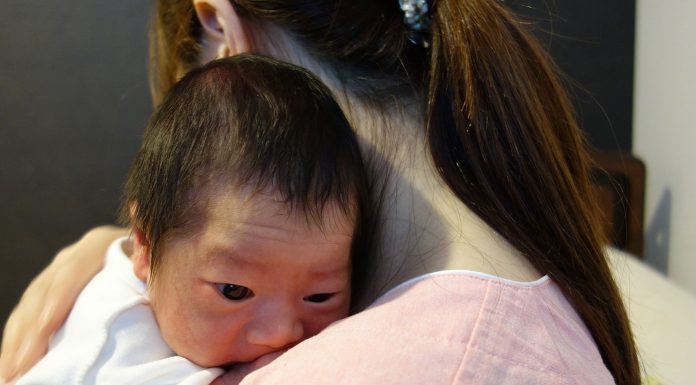A concerned mother and daughter crane their necks up at a small TV in the corner of their hospital room. Not entertained by the funny cartoon, both mum and her five-year-old seem anxious.
Suddenly, a head pokes around the door. “Look Doctor Bob, it’s our friend Anna*.” A second head looks in at the puzzled pair sitting on the hospital bed.
You could forgive their quizzical expressions as the duo in the doorway are wearing white lab coats but have bright red noses. Dr Bob Brrooom! and Dr Bluebottle, are clown doctors.
Clown Doctors New Zealand is a charity active in Christchurch, Wellington, and Auckland. The aim is to spread joy and laughter to children in need, and it clearly works in this case. Within minutes of Dr Bluebottle playing ‘The Wheels on the Bus’ on her ukulele, Anna is laughing and singing along while her mother smiles and visibly relaxes.
The Clown Doctors New Zealand Charitable Trust was co-founded in 2009 by chief executive and creative director Thomas Petschner, a health scientist with a particular interest in humour in medicine, and programme director Rita Noetzel.
Nurses who’ve interacted with clown doctors will know they are not medical doctors or anything like circus clowns with their large wigs, outlandish costumes, and garish make-up. The only reference to Drs Bob and Bluebottle being clowns are their red noses. Under his lab coat, Dr Bob has a green Hawaiian shirt, brown shorts, and knee-high purple socks, while Dr Bluebottle wears a flowery dress with a blue hem and matching hat. They look a little strange compared to the regular staff, but there’s nothing over-the-top that might frighten anyone.
Clown doctors are also not just for patients as hospital staff can have fun with them, too. It’s something Lisa Wingfield, aka Clown Dr Bluebottle, enjoys.
“We were with one of the nurses when she was doing some blood pressure tests with a child, and the kid was laughing away. She said ‘Oh this is marvellous, their blood pressure has gone right down.’ So there’s an absolute direct response,” says Wingfield.
“If they had a little stress-reducing thing on the wall, that would be even better because we would see that dropping too.”
Clown doctors have also been incorporated into patient rehabilitation therapy.
“There was a child who broke both legs in a car accident, so he had to learn to walk again. But because of the pain he didn’t want to,” says Petschner. “He wasn’t responding to therapy, and the physiotherapists and nurses were desperate because they wanted the kid to walk.
“So two clown doctors started a race with him through a corridor. The kid was in the middle and the clowns started moon-walking. They were going backwards for every half-step the child took. He was so motivated, he actually walked the whole length of the 30-metre corridor.”
Clown doctors are increasingly becoming a normal part of hospital routine.
“We can use them as a distraction for people who are going to have a painful or a scary procedure,” says Noetzel.
“We’ve seen it time-and-time again. The hospital staff knows the clown doctors will be on the ward and they wait until the clown doctors are there so there’ll be a distraction. It won’t be as traumatic for the child, it won’t be as traumatic for the family; everyone will just be happier.”
A child health psychologist at Christchurch Hospital, Tony White, agrees.
“While they are being silly, they are always highly respectful of patients and staff. They religiously keep detailed records of all interactions with patients and they are very responsive to feedback from medical staff. They also give the medical professionals a ‘permit’ to laugh again in those humourless hospital environments, so we would always like to keep them clowning around,” says White.
Lynda Driscoll, the ward clerk for Christchurch Hospital’s Children’s Acute Assessment Unit, believes clown doctors connecting with staff is almost as important as their connections with patients.
“It is always a pleasure to see the clown doctors. They bring a sense of fun that gives a lift to the whole atmosphere on the ward. I think they make a very valuable contribution to the well-being of children in hospital.”
April 7 was New Zealand Smile Day, the annual awareness day for Clown Doctors – an opportunity for us each year to share joy and laughter with children who don’t usually receive a visit from us.
A great way for nurses around the country to join in the celebrations next year is to incorporate a little humour into their daily routine.
The first step, Petschner says, is not taking yourself too seriously and finding the humour in everyday situations.
“Place a (clean) pencil horizontally between your teeth. This puts the mouth in the smile position,” he says.
“Then with the pencil there, first try to tell yourself in the mirror, and afterwards your colleagues, about last night’s dinner or what you did in the weekend. You will feel better right away because your mouth is smiling, which has the same biological effect as a genuine smile.”
“It may sound unrealistic but even just thinking about laughing, even when you don’t feel like it, can have a positive effect on your mood,” says Petschner.
“Try to consciously laugh for one minute. It may seem a little strange but you will soon start to laugh naturally. While laughing you are stimulating the nerves in your face, the brain registers ‘something is funny’ and everything else follows.”
It’s easy to share a smile and incorporate humour everyday, especially on Smile Day.
*Name changed.
For more about New Zealand Smile Day and Clown Doctors, visit www.clowndoctors.org.nz






















